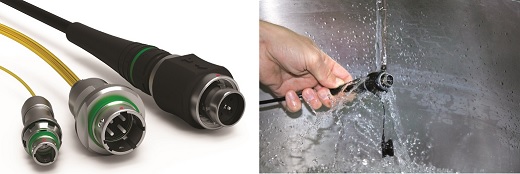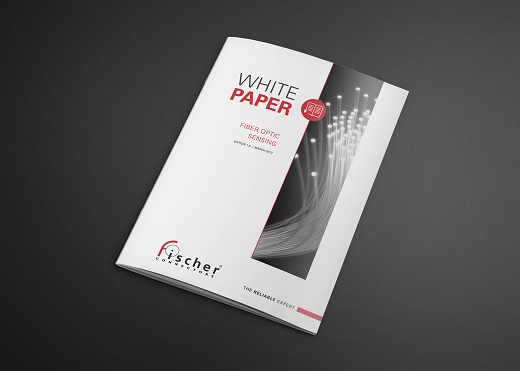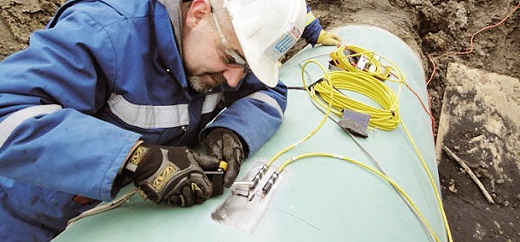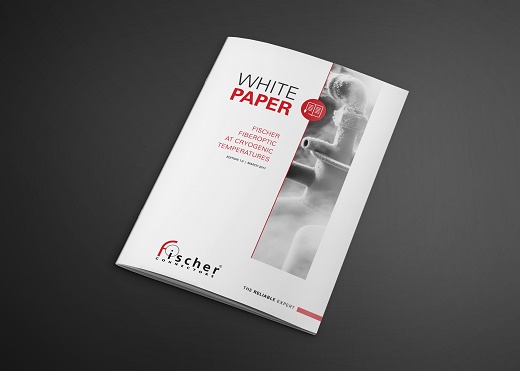Demand for data is growing exponentially, piling pressure on networks to deliver more data, faster, over longer distances. Fibre optic systems have revolutionised data transfer and information gathering, but in complex applications like energy they require premium optical performances to work flawlessly. Choosing the right connector and cable combination is therefore crucial to staying ahead. Fischer Connectors partners with its customers worldwide to design innovative fibre optic solutions that meet new needs for reliability, high performance and ease of use. The Fischer FiberOptic Series ensures high optical stability in any application and environment, combined with easy mating and cleaning.
Innovative Interconnecting Solutions for Harsh Environments
Faced with new societal and technological trends – like increased mobility and the Internet of Things, design engineers are constantly on the lookout for new ways of meeting customer expectations for ever more data, delivered ever faster across different platforms and devices, both indoors and outdoors. Fibre optic systems provide a secure, easy way to install fast, reliable data links and carry large amounts of data over long distances. Their uses are therefore expanding rapidly – including into complex applications and extreme environments. However, performance in these demanding applications is often limited by poor optical stability and time-consuming, fiddly maintenance. Fischer Connectors recommends that design engineers consider the entire system, determine specific technical requirements and conditions of use, and leverage state-of-the-art technologies, when selecting connector and cable solutions to overcome these limitations and optimise current and future performance.
Fischer Connectors’ experienced technical teams work closely with customers to identify their specific requirements and integrate the ideal connectivity solution into their fibre systems, in order to maximise optical stability and minimise maintenance operations. The pre-cabled Fischer FiberOptic Series solutions are the perfect choice for indoor, outdoor and extreme applications when performance and reliability are key. They combine high-quality optics with easy use, field cleaning and maintenance, making them ideal for demanding applications like energy, sensing, medical devices, defence and security, broadcast, telecom and transportation.

Easy use, cleaning and maintenance even in harsh environments make Fischer FiberOptic connectors ideal for demanding applications
All connectors in the Fischer FiberOptic Series are ultra-rugged, able to withstand operating temperature ranges of -40°C to +85°C (depending on the fibre-optic cable), and are resistant to corrosion, salt mist, vibration and shock over 1,000 mating cycles. UPC and APC polishing reduces insertion and return losses, making devices more efficient. High-performance sealing (IP68 mated, 2m/24h; IP67 unmated) and best-in-class butt joint termini provide unmatched device protection, preventing damage even in harsh environments. Their ergonomic design makes these connectors easy to handle, and their removable sleeve holder (monobloc mate adapter) makes them easy to clean in the field, to keep devices in top condition. Unmated connectors can be rinsed freely under water or in an ultrasound bath. Connectors can easily be connected and disconnected with one hand, thanks to their push-pull locking system. All of Fischer Connectors’ products are manufactured under the most stringent quality conditions and tested to ISO and IEC standards.
To address design engineers’ needs for greater flexibility and efficiency, the Fischer FiberOptic Series offers a choice of full fibre optic (with one, two or four optical channels), or hybrid solutions (four channels, free distribution between optical and electrical lines). The newest addition to the series – the miniature, lightweight single fibre optic connector (FO1) – fulfils the growing market need for higher data transmission rates over long distances, minimising space and maximising efficiency. The hybrid connector is also ideal where space saving is essential. Integration is made easy thanks to a wide choice of body styles. All of these connectors can be pre-configured with Fischer FiberOptic Series reels of any required length, or integrated into custom assemblies (single mode UPC/APC and multimode UPC) for a convenient and flexible turnkey solution.
Customers in the oil and gas industry have chosen Fischer Connectors’ innovative, high-reliability solutions to allow the efficient extraction of natural resources in hazardous offshore and onshore environments, where dependable operation can help prevent costly downtime or accidents. These solutions have markedly improved the performance of devices used in seismic evaluation and drilling, geophysical exploration, monitoring and infrastructure maintenance. Fischer FiberOptic Series connectivity solutions ensure precise sensing capabilities, real-time information gathering and fast data transfer over long distances between oil and gas extraction points and control centers.
Reducing Complexity for Design Teams
In addition to providing vertically integrated solutions – comprising connectors, component parts and cables – Fischer Connectors accompanies customers through all stages of their project, from design, through prototyping, assembly and testing, to manufacturing. By putting its cutting-edge technology, production tools and experts at its customers’ disposal, Fischer Connectors reduces complexity in challenging applications and helps design teams bring new ideas to market quickly to gain a competitive edge. The company’s dedicated technical and customer support teams serve customers from its headquarters and state-of-the-art manufacturing facility in St-Prex, Switzerland, as well as from its network of subsidiaries and local partners worldwide.
To support its continuous innovation drive, Fischer Connectors also publishes white papers on new challenges faced by its customers in varied applications, offering guidance on the selection of performance-boosting connectivity solutions. Two recent white papers address topics of importance for fibre optic systems designers, particularly those involved in designing equipment for sensing applications and for use in cryogenic environments. The first, on “Fibre Optic Sensing”, presents the technical basics behind sensing over fibre technologies, its main applications and the cabling solutions involved. The second, on “Fischer FiberOptic at cryogenic temperatures”, discusses the performances of a Fischer FiberOptic Series connector when tested at 1.9 Kelvin at CERN’s cryogenic facility (SM18). It identifies potential new uses in applications such as oil and gas.
White Paper on “Fiber Optic Sensing”
This white paper discusses the key factors that will help design engineers define the best solution for their cabling needs, in order to have the most reliable and easy-to-use system that minimises maintenance operations. It explores uses of different types of sensing within the oil and gas application.

Sensing and instrumentation have to operate in harsh environments. Fiber optic sensing is challenging because the physical properties of light into the fiber can be adversely affected by strain, temperature, or sound, reducing the performance of fibre optic systems. Several technologies enable one of two types of sensing: local measurement points or distributed measurement all along the fibre. These technologies rely on the wave properties and quantum interactions of light with the fibre optic core matter.
In sensing with local measurement points, sensors are located along the fibre at chosen measurement points. Fibre Bragg sensors (or FBG for Fibre Bragg Grating) are typically used, and single-mode fibre is needed. Since the information is contained in the light reflected by the FBG, this technology requires ultra-low return losses. In distributed sensing, the whole fibre is used as a sensor and a standard telecom fibre can be used. Light backscattering, which occurs when a photon encounters an impurity inside the fibre core, is the main physical interaction driving distributed sensing measures; light is sent backwards into the fibre in the direction of the light source. There are three main profiles of backscattering: Raleigh backscattering – same wavelength; Brillouin backscattering – positive (Stoke) and negative (anti-Stoke) low shift, caused by thermal excitation or strain; Raman backscattering – positive (Stoke) and negative (anti-Stoke) high shift, caused by interaction with molecular vibrations in the fibre.
The oil and gas industry is integrating fibre optics into its operations and exploration activities to improve data transfer and sensing capabilities over great distances between extraction points and control centres. Fibre optics, with their lightweight and sparkle-free interconnections, provide a secure and easy way to install fast, reliable data links. Light waveguide interactions are also used as a sensing device, allowing easier structural, temperature and acoustic monitoring for drilling extraction and carrying activities.

FBG Sensing
Fibre Bragg technology allows for very fast, accurate measurements, so it is used for structural pipeline monitoring at specific locations (protected natural areas, rivers, etc.). Its localized nature enables the simple and cost-effective upgrading of existing pipe monitoring. It is also used downhole for measuring pressure, strain in the drilling tools, temperature and flow.
DAS (Distributed Acoustic Sensing)
The sensitivity and relative speed of Rayleigh-based sensing allows distributed acoustic sensing (DAS), in which the fibre acts as a microphone sensing acoustic vibrations. With suitable analysis software, pipelines can be continuously monitored for unwanted interference or irregularities. Able to operate in harsh environments, the technology can also be used in oil drilling monitoring applications. Thanks to the sound it produces, it relays real-time information on the geological properties of the material being drilled.
DTSS (Distributed Temperature and Strain Sensing)
DTSS is based on Brillouin technology and can measure both strain and temperature all along a fibre that can run up to a hundred kilometres. This makes it the ideal pipeline or power line monitoring system. Using this technology, coupled with time domain analysis, allows pipeline operators to locate any leak precisely. DDTS also helps during oil extraction and operations downhole and in wells by providing distributed pressure, temperature and strain monitoring (to monitor tubing integrity).
DTS (Distributed Temperature Sensing)
DTS is based on Raman backscattering technology and is used in similar applications to DTSS. When only the temperature needs to be measured, DTS is a cheaper solution than DTSS. As the wavelength shift is higher, the system requires simpler optical components to insulate wavelengths. Moreover, DTS generally only uses one fibre and standard cable designs.
White Paper on “Fischer FiberOptic at Cryogenic Temperatures”
This white paper discusses the performances of a Fischer FiberOptic Series connector, transmitting the signal from the sensor placed inside the cryostat to the outside environment, when tested at 1.9 Kelvin at CERN’s cryogenic facility under the EuCARD-2 Transnational Access programme. Tests were undertaken to measure the robustness of the connector in the cryogenic environment.

CERN’s cryogenic facility (SM18) is a world-leading magnet test facility for testing magnets and instrumentation at low temperatures (1.9 K up to 80 K) and up to high currents (20 kA). CERN is developing tests for cryogenic instrumentation based on fibre optic sensors for temperature and strain monitoring for the new generation of superconducting magnets. These tests are carried out at temperatures of near absolute zero.
The connector is the interface between the data acquisition system and the fibre optic sensors used for measuring strain and temperature during powering tests on superconducting magnets. For these tests, the Fischer FiberOptic connector was impregnated in the superfluid helium. The temperature in the cryostat was slowly reduced, cooling the helium inside to superfluid helium phase at 1.9 Kelvin. Cool-down measurements were taken to quantify insertion losses (IL) and return losses (RL).
The use of fibre optic sensors in cryogenic conditions remains very rare. The results of the tests in terms of precision optical performances of the Fischer FiberOptic connector were conclusive. Optical performances were only marginally affected, increasing the IL by 0.1 dB per contact. Increased insertion loss only occurred at cryogenic temperatures (1.9 K) and reverted back once the temperature had returned to ambient temperature (the measured IL was exactly the same before and after the test). The performances observed during these tests enable the use of FiberOptic Series connector to be guaranteed in other applications in extreme environments.
These tests served as an excellent baseline measurement for further testing and provided a good starting point for investigating fibre optic interconnect solutions for other cryogenic applications. One such application could be liquid natural gas (LNG) pipelines, where temperatures can drop to approximately -180°C. In this situation, as demonstrated in the CERN tests, optical fibre can be used to monitor temperatures along the pipeline even in extreme cold.
Useful Links
- Download Fischer Connectors’ white papers at: https://www.fischerconnectors.com/global/en/technical/white-papers
- More info on Fischer FiberOptic Series at: https://www.fischerconnectors.com/global/en/fischer-fiberoptic-series

